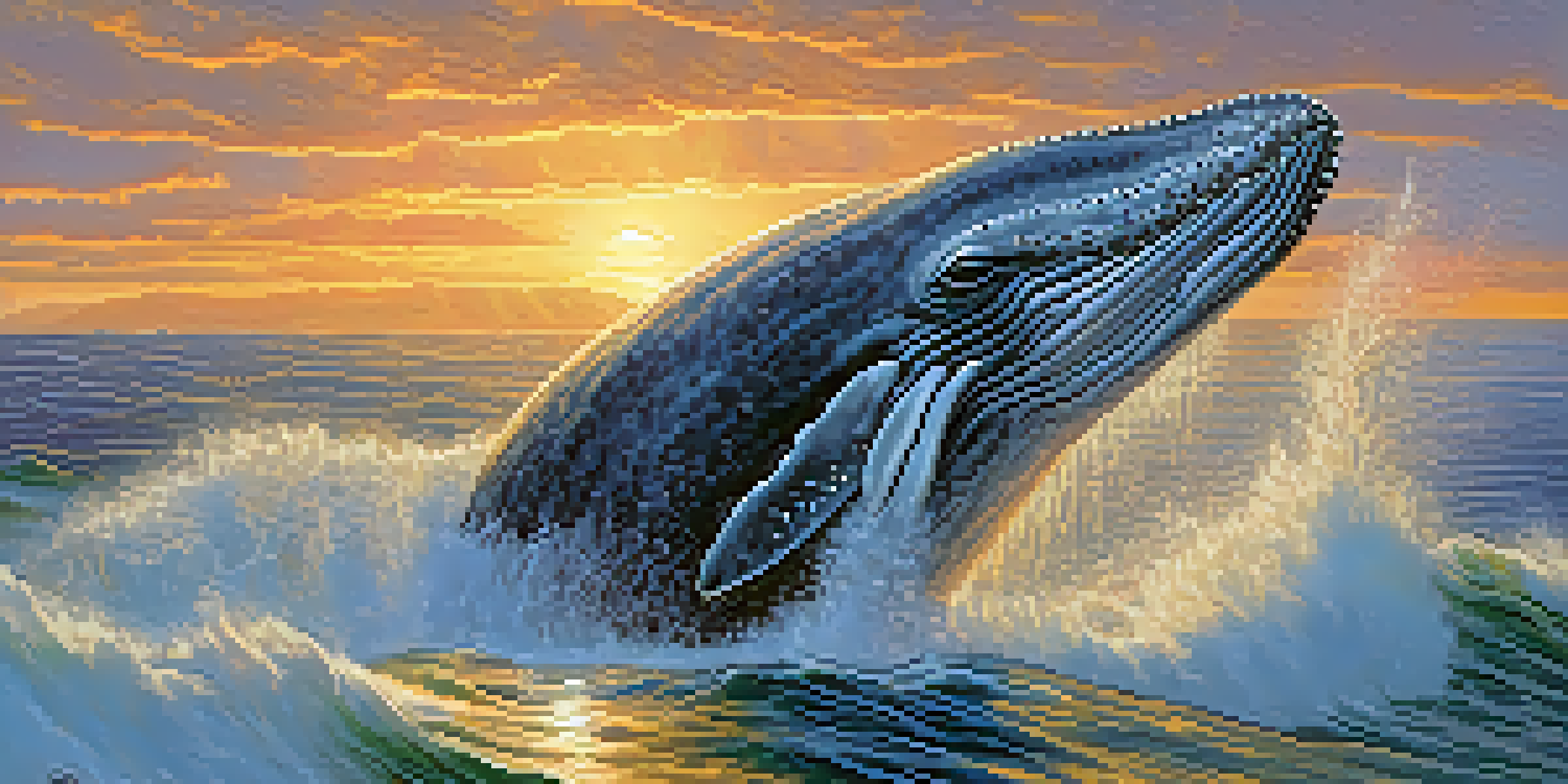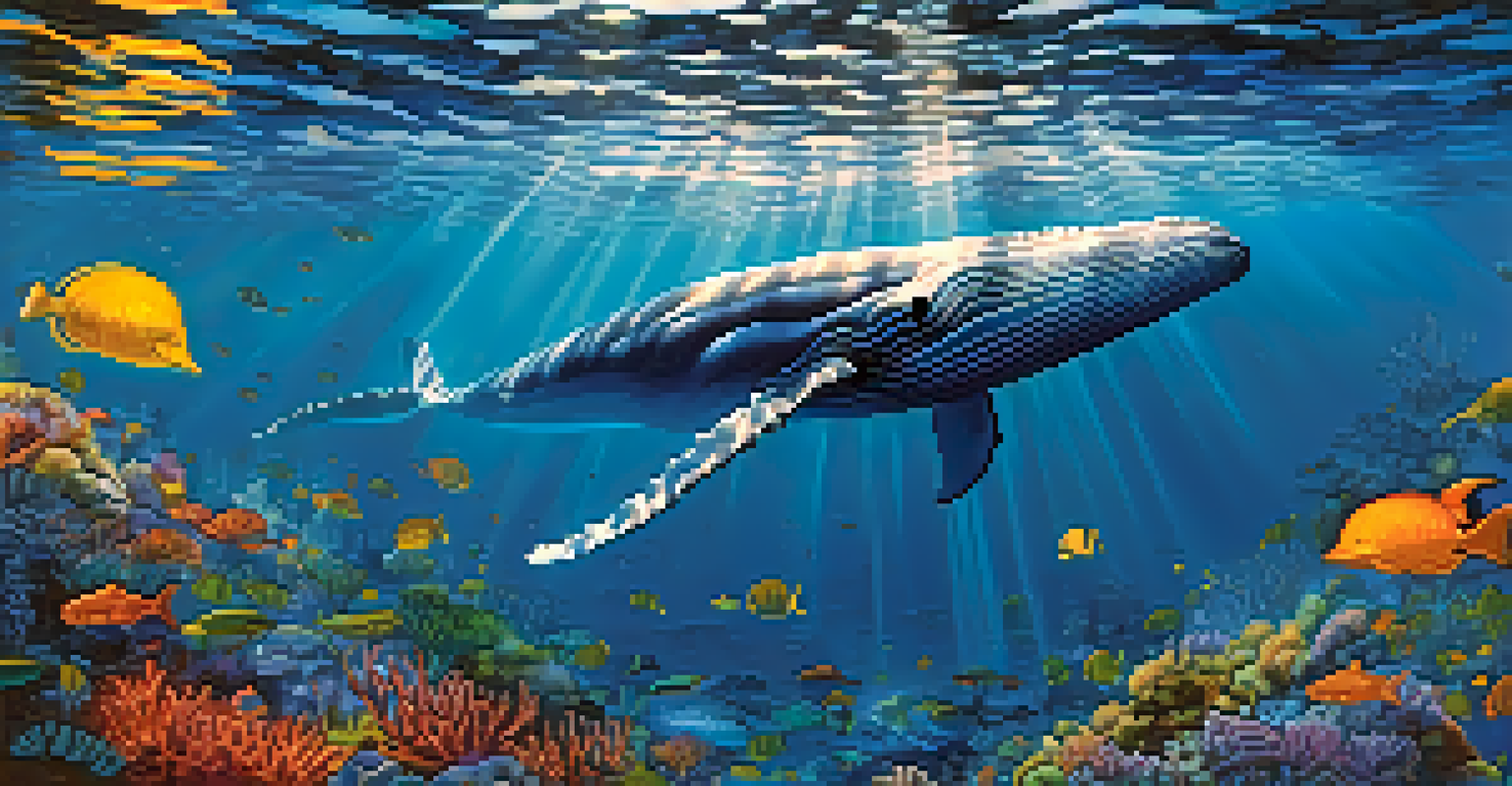Whale Watching in San Diego: Species and Conservation

An Introduction to Whale Watching in San Diego
Whale watching in San Diego offers a unique opportunity to witness these magnificent creatures up close. With its stunning coastline and rich marine biodiversity, San Diego is one of the prime spots for whale enthusiasts. Whether you're a seasoned naturalist or a curious first-timer, the experience is nothing short of magical.
The ocean stirs the heart, inspires the imagination and brings eternal joy to the soul.
Every year, thousands of visitors flock to the Pacific waters to catch a glimpse of these gentle giants. From gray whales migrating along the coast to the awe-inspiring blue whales, there’s an abundance of species to observe. Each season brings different whale species, making it an exciting adventure for everyone.
Not only does whale watching provide an unforgettable experience, but it also plays a crucial role in marine conservation. By raising awareness and understanding of these species, we contribute to their protection and preservation, ensuring future generations can enjoy these wonders of nature.
Key Whale Species You Can See
San Diego is home to a diverse range of whale species, each offering its own unique charm. The gray whale, for instance, is a favorite among watchers, known for its remarkable migration journey from Alaska to Mexico. These whales can often be seen breaching the surface, creating a spectacular sight.

Another impressive species is the blue whale, the largest animal on the planet. Spotting a blue whale during your trip is a rare treat, as they can grow up to 100 feet long. Their sheer size and graceful movements leave many in awe, making them a highlight of any whale watching excursion.
Whale Watching: A Unique Experience
San Diego offers unforgettable whale watching opportunities, showcasing diverse species and stunning marine life.
Humpback whales are also common in the area, particularly during their migration periods. Known for their acrobatic displays, these whales often breach and slap the water with their fins, providing a thrilling experience for onlookers. Each species brings something special to San Diego's vibrant marine environment.
Best Times for Whale Watching in San Diego
Timing is everything when it comes to whale watching in San Diego. The peak season usually runs from December through April, coinciding with the gray whale migration. During this time, thousands of gray whales make their annual journey along the California coast, offering numerous opportunities for sightings.
Whales are the guardians of the ocean, and we must be their caretakers.
In summer months, from June to September, whale watchers can look forward to spotting blue whales and fin whales. This period is particularly exciting as these massive creatures come close to the shore to feed on abundant krill. The warm weather also makes for a more pleasant outing on the water.
While these are the prime seasons, it's worth noting that whales can sometimes be spotted year-round. Each season has its unique offerings, and even a casual boat ride can lead to unexpected encounters with these majestic beings. So, keep your camera ready, no matter when you decide to go!
Choosing the Right Whale Watching Tour
Selecting the right whale watching tour can enhance your experience significantly. There are various options available, ranging from large boats that accommodate many passengers to smaller, more intimate vessels. Each type of tour offers a different perspective on the ocean and its wildlife.
Researching the tour company is crucial; look for operators that are committed to responsible and ethical whale watching practices. Companies that prioritize conservation will often provide educational information about the species and their habitats, enriching your outing further.
Conservation Efforts Matter
Participating in whale watching helps support crucial conservation efforts aimed at protecting these majestic creatures.
Additionally, consider the duration of the tour and what it includes. Some tours offer snacks, drinks, or even educational talks, while others might focus solely on the experience of whale watching. Choosing a tour that aligns with your interests will ensure a memorable day on the water.
Understanding Whale Conservation Efforts
Conservation is a vital aspect of whale watching, and many organizations are actively involved in protecting these majestic creatures. Awareness campaigns, research initiatives, and habitat protection are just a few of the efforts underway to ensure whale populations thrive. By participating in whale watching, you contribute to these vital conservation efforts.
Many tour companies collaborate with conservation groups to support research and monitoring of whale populations. This partnership helps gather important data that informs policies aimed at protecting marine ecosystems. As a whale watcher, you become a part of this larger movement, helping to safeguard the future of these species.
Furthermore, educational resources are often provided during tours, allowing participants to learn more about the challenges whales face, such as climate change and habitat loss. Understanding these issues empowers us to take action, whether through supporting conservation efforts or advocating for sustainable practices.
Whale Watching Etiquette and Safety Tips
While whale watching is an exciting adventure, it’s essential to follow proper etiquette to ensure the safety of both the whales and fellow observers. Keeping a respectful distance from the whales is paramount, as approaching them too closely can disrupt their natural behaviors. Most tour operators will have specific guidelines to follow, so be sure to adhere to their instructions.
Additionally, maintaining a calm and quiet environment on the boat allows everyone to enjoy the experience fully. Loud noises can startle whales and drive them away, so keep conversations low and avoid sudden movements. This way, you not only enhance your own experience but also increase the chances of spotting more whales.
Best Times for Whale Sightings
The prime whale watching seasons in San Diego are from December to April for gray whales and June to September for blue whales.
Lastly, be mindful of your own safety while on the boat. Wear life jackets if provided, and listen to the crew’s safety briefings. Being prepared ensures that your whale watching adventure is both enjoyable and safe, allowing you to focus on the breathtaking sights around you.
The Impact of Climate Change on Whales
Climate change is a pressing issue affecting marine life, including whales. Rising ocean temperatures can impact whale migration patterns, feeding grounds, and breeding behaviors. As their habitats change, it becomes increasingly important for us to understand these impacts and advocate for solutions.
Additionally, the melting ice in polar regions affects species like the bowhead whale, which relies on cold waters. As their environments shift, these whales may struggle to adapt, making conservation efforts even more critical. Awareness of these changes can help us appreciate the fragility of marine ecosystems and the importance of protecting them.

By participating in whale watching and supporting conservation efforts, we can contribute to the fight against climate change. Every little bit helps, whether it's spreading the word about sustainable practices or supporting organizations dedicated to marine conservation. Together, we can make a difference for whales and the ocean they call home.